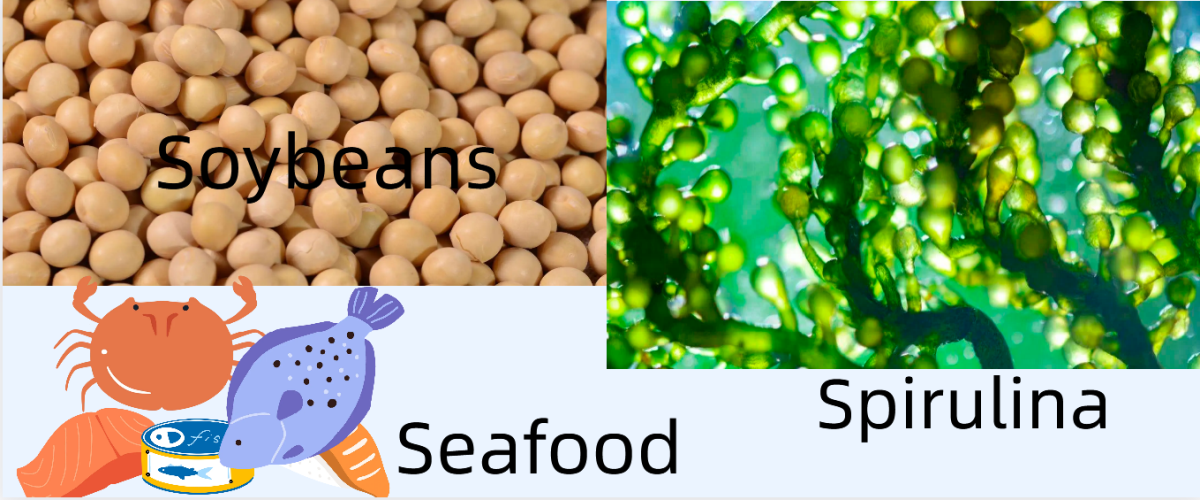N-Methyl-DL-Aspartic Acid shows promise in enhancing cognitive function and protecting brain health. Its ability to improve memory, attention, and neuroplasticity, as well as its neuroprotective effects, make it an intriguing compound for those seeking to optimize their cognitive abilities. As research into N-Methyl-DL-Aspartic Acid continues, it may pave the way for new therapeutic interventions to address cognitive decline and improve overall brain function.
N-methyl-DL-aspartic acid, is a synthetic compound that is gaining popularity in neuroscience. This compound belongs to a class of substances known as N-Methyl-DL-Aspartic Acid receptor agonists. N-Methyl-DL-Aspartic Acid receptors are involved in various processes in the brain, such as learning, memory, and synaptic plasticity. N-Methyl-DL-Aspartic Acid is a derivative of aspartic acid, an amino acid commonly found in foods.
So, what exactly is N-methyl-DL-aspartic acid? N-Methyl-DL-Aspartic Acid is a modified form of aspartic acid in which an extra methyl group has been added to the molecule. This modification enhances the compound's ability to bind and activate N-Methyl-DL-Aspartic Acid receptors in the brain. By activating these receptors, N-Methyl-DL-Aspartic Acid can affect communication between neurons, leading to changes in brain function.
In addition, N-Methyl-DL-Aspartic Acid is a well-known NMDA-type glutamate receptor agonist. Synthetic N-Methyl-DL-Aspartic Acid has very potent induction of mammalian hypothalamic factors and pituitary hormones.
● One of the main benefits of N-Methyl-DL-Aspartate is its role in testosterone production. Testosterone is a hormone essential for muscle development, strength and endurance. Research suggests that N-Methyl-DL-Aspartic Acid may stimulate the release of luteinizing hormone (LH), which increases testosterone synthesis. Increased testosterone levels can support muscle growth, speed up muscle recovery, and even enhance libido.
● N-Methyl-DL-Aspartic Acid is also associated with improved cognitive function. This compound is thought to play a role in the modulation of glutamate receptors in the brain. Glutamate is a neurotransmitter critical to memory, learning and overall brain health. By modulating these receptors, N-Methyl-DL-Aspartic Acid can enhance cognition, focus and clarity of thought.
● N-methyl-DL-aspartic acid also has potential anti-inflammatory properties. Inflammation is a natural response to tissue damage, but chronic inflammation can hinder muscle recovery and lead to long-term soreness. Studies have shown that N-Methyl-DL-Aspartic Acid can reduce inflammation by inhibiting pro-inflammatory cytokines, which can help muscle repair and reduce exercise-induced muscle damage.
● As an amino acid derivative, N-Methyl-DL-Aspartic Acid is involved in protein synthesis, which is essential for muscle growth and repair. It supports the body's ability to build and maintain muscle tissue, making it a valuable asset for athletes looking to optimize gains.
● The synthetic N-Methyl-DL-Aspartic Acid has very strong activity on the induction of mammalian hypothalamic factors and pituitary hormones.
1. Spirulina
Although N-Methyl-DL-Aspartic Acid is not found primarily in foods, some natural sources contain small amounts of this amino acid derivative. One such source is spirulina, a type of blue-green algae often consumed as a dietary supplement. Spirulina contains several essential amino acids, including N-Methyl-DL-Aspartic Acid, which contribute to its overall nutritional value. Additionally, spirulina is rich in antioxidants, vitamins and minerals, making it a beneficial addition to a balanced diet.
2. Soybeans
Soy is widely consumed in various forms, such as tofu, soy milk, and edamame. They are an excellent source of protein and contain all essential amino acids, including N-Methyl-DL-Aspartic Acid. Adding soy products to your diet provides a natural source of N-Methyl-DL-Aspartic Acid along with other essential nutrients.
3. Seafood
In addition to spirulina and soy, certain seafood also contain N-Methyl-DL-Aspartic Acid. Fish such as salmon, tuna, and sardines are rich in N-Methyl-DL-Aspartic Acid due to their amino acid content. These fish are also rich in omega-3 fatty acids, which are good for heart health and brain function. Including seafood in your diet provides not only N-Methyl-DL-Aspartic Acid, but a range of other essential nutrients as well.
While N-Methyl-DL-Aspartic Acid can be obtained from these food sources, it's worth noting that it's found in relatively small amounts. The main source of NMDA in the body is through the synthesis and metabolism of various amino acids. Therefore, relying solely on food sources to meet N-Methyl-DL-Aspartic Acid requirements may not be sufficient. However, incorporating these foods into a well-rounded diet can contribute to overall brain health and function.
N-Methyl-DL-Aspartic Acid is a compound that has received attention in recent years for its potential benefits in exercise and enhancing athletic performance. However, with any new substance, there are concerns about its safety and potential side effects. In this article, we explore whether N-methyl-DL-aspartic acid is safe for human consumption.
First, it's important to understand that N-methyl-DL-aspartic acid is a derivative of aspartic acid, a non-essential amino acid that occurs naturally in the body. Aspartic acid plays a vital role in the synthesis of proteins and neurotransmitters.
However, despite the potential benefits of N-Methyl-DL-Aspartic Acid, its safety remains controversial. Research on its long-term effects and potential risks is limited. Some animal studies suggest that high doses of N-Methyl-DL-Aspartic Acid may cause liver damage and changes in reproductive health. Additionally, some users have reported side effects such as anxiety, irritability, and insomnia.
Therefore, it is critical to consult a healthcare professional before starting N-methyl-DL-aspartic acid or any new supplement regimen. They can assess your medical condition, assess potential risks or interactions with other medications you may be taking, and provide appropriate guidance.
N-Methyl-DL-Aspartic Acid is a derivative of aspartic acid, an amino acid that plays a vital role in the production and release of hormones in the body. Aspartic acid occurs naturally in some foods, but N-Methyl-DL-Aspartic Acid is available in a concentrated form that can be easily incorporated into supplement regimens. By taking N-Methyl-DL-Aspartic Acid, individuals aim to increase levels of testosterone, growth hormone, and insulin-like growth factor-1 (IGF-1) to optimize performance and muscle development.
When it comes to dosage, a responsible and conservative approach must be followed. While N-Methyl-DL-Aspartic Acid are highly effective, excessive use can have adverse effects on the body. The recommended dose for most people is 1 to 3 grams per day. However, it is recommended to start with the lowest effective dose and gradually increase it as needed. This approach allows the body to adjust and helps determine the best dosage for each individual, taking into account factors such as body weight, metabolism, and personal tolerance. Additionally, combining N-Methyl-DL-Aspartic Acid with a balanced diet and regular exercise can enhance results and promote overall health and well-being.
It's worth noting that N-Methyl-DL-Aspartic Acid can affect individuals differently, and some people may experience side effects if proper precautions are not taken. Common side effects include headache, irritability, and changes in libido. These side effects are usually transient and can be minimized by dose adjustment or temporary discontinuation of use. However, in the event of severe or persistent side effects, it is recommended to consult a healthcare professional for further guidance.
Q: How long does it take for N-Methyl-DL-Aspartic to work?
A: The effects of N-Methyl-DL-Aspartic acid can vary depending on the individual, dosage, and method of administration. However, typically, it is believed that N-Methyl-DL-Aspartic acid may take anywhere from a few minutes to a few hours to start working. It is recommended to consult with a healthcare professional or follow the instructions provided by the manufacturer for more specific information on how long it takes for this compound to take effect.
Disclaimer: This article is for informational purposes only and should not be considered medical advice. Always consult a healthcare professional before using any supplements or changing your healthcare regimen.
Post time: Jul-06-2023







